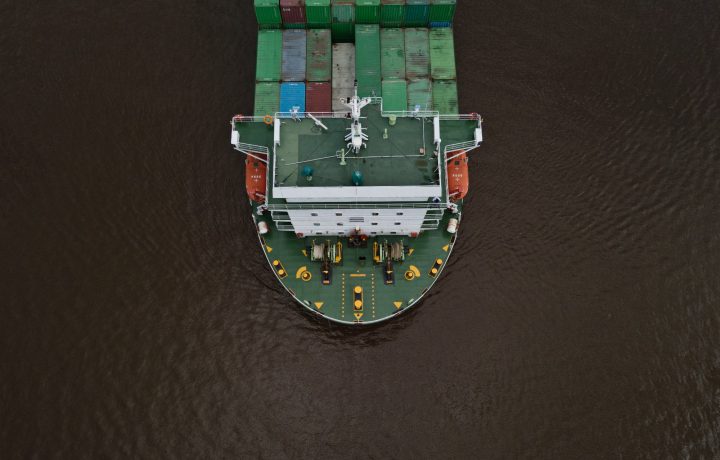Contracts in commodities trading industry, even if differ in fine print and general terms and conditions attached, tend to be quiet standardized.
There are key elements dictated by the nature of the business itself, appearing in majority of contracts and containing certain standard formulations.
Those key terms naturally bring the attention of experienced trader, who happen to peruse over the contract.
We will focus on them in discussion below.
Each contract starts with the clear definition of the parties concerned, stating counter party’s full company name with full address. When dealing with corporations with offices in many jurisdictions it is key to determine the actual legal entity with whom we enter into the agreement.
The level of financial strength of that entity and financial guarantees provided by the corporate group have a clear implications towards our financial risk.
In commodities trading it is customary to issue contracts on the same day on which the contract is concluded and chase the signature from the counter party on the same day or on subsequent days.
Contract needs to clearly state the name and specification of the commodity. It is important to make sure for legal reasons and customs compliance that once we choose the name for the commodity, it should appear in the same form on all shipping documents.
Sometimes names are used interchangeably in commodities market, for instance Roasted Molybdenum Concentrate is used interchangeably with Molybdenum Oxide, as a reference to the same product.
On the contract full chemical specification (assay) should be stated. It depends from the situation and our intentions how we formulate the specs on the contract.
For instance, in reference to the same batch of commodity, with an essay provided by surveyor/testing company we have an option of:
a) stating the standard specification for the given commodity
What is the standard and who dictates it? – you may as well ask.
Standard specifications are either established by the market participants – and are known for those “in the know” or are formulated by institutions.
Sometimes Associations of Traders or Producers render them more official. As it happened with minor metals/rare earths and MMTA (Minor Metals Trade Association) – example of standard Russian cobalt specification available here.
Otherwise futures exchanges by stating specification “good for (physical) delivery” under their futures contract popularize certain specification therefore making it a standard for a given commodity. They effectively create liquidity for such spec. Example of Milling Wheat Euronext specification available here (look under quality section of the table).
Standard specs (spec = specification/assay in commodity trading lingo) are usually stated in terms of minimums and maxes for elements that commodity contains.
Usually one or more elements are the ones we actually pay for and the rest are impurities that we do not want to exceed stated thresholds (because if they do they may become useless from the point of view of technological processes in which they are used or they may render processing for buyers of commodity more costly).
b) actual specs
You state on the contract exactly what you have on the assay from inspection/surveying company (be it SGS, Bureau Veritas, Intertek).
Let us assume the scenario that we have prospects to conclude a back to back trade. We receive official certificate of quality with actual specs as issued by one of inspection companies. The actual specs are within standard specs minimums and maxes .
Unless it can help us to justify a higher profit margin on the sales side or just secure a sale, we should not resort to putting actual specs on the sales side. Why?
Because it increases risk for us. What if buyer undertakes testing on his side and specs obtained will differ from ours to our detriment.
It does happen that different samples and different testing methods bring slightly different results.
It leads to unnecessary quality disputes that we can easily avoid by putting standard specs.
Generally a rule in physical trading is to put “tighter”/actual specs on purchase contracts and as loose as possible specs on the sales contracts.
Another important part of the contract refers to point of delivery and time of shipments.
In case of points of delivery we use Incoterms. So for instance we talk about sale on CIF Rotterdam basis. Discussion of Incoterms requires a separate article. At the moment I would be happy to direct readers to Wikipedia article on this topic.
Just I would like to make one point that I have noticed some smart people find a little confusing, while I explain the term in my teaching/consulting practice. So please read excerpt from Wikipedia below:
“CFR – Cost and Freight (named port of destination)
The seller pays for the carriage of the goods up to the named port of destination. Risk transfers to buyer when the goods have been loaded on board the ship in the country of Export. The Shipper is responsible for origin costs including export clearance and freight costs for carriage to named port. The shipper is not responsible for delivery to the final destination from the port (generally the buyer’s facilities), or for buying insurance. If the buyer does require the seller to obtain insurance, the Incoterm CIF should be considered. CFR should only be used for non-containerized seafreight and inland waterway transport; for all other modes of transport it should be replaced with CPT.
CIF – Cost, Insurance & Freight (named port of destination)
This term is broadly similar to the above CFR term, with the exception that the seller is required to obtain insurance for the goods while in transit to the named port of destination. CIF requires the seller to insure the goods for 110% of their value under at least the minimum cover of the Institute Cargo Clauses of the Institute of London Underwriters (which would be Institute Cargo Clauses (C)), or any similar set of clauses. The policy should be in the same currency as the contract. The seller must also turn over documents necessary, to obtain the goods from the carrier or to assert claim against an insurer to the buyer. The documents include (as a minimum) the invoice, the insurance policy, and the bill of lading. These three documents represent the cost, insurance, and freight of CIF. The seller’s obligation ends when the documents are handed over to the buyer. Then, the buyer has to pay at the agreed price. Another point to consider is that CIF should only be used for non-containerized seafreight; for all other modes of transport it should be replaced with CIP.”
The definitions above are certainly correct, yet please for the moment forget about them.
In many physical trading related publications you will see the prices quoted on CIF basis.
For instance CIF Rotterdam USD 600/MT
When you see such price it simply means this is the price for buying the commodity when you collect it in Rotterdam port. So in CIF Rotterdam USD 600/MT the costs of freight (the cost of getting the commodity there, from any destination in the world no matter if Barcelona or Shanghai is contained in the price as well as insurance of the shipment).
Do not forget however that unless explicitly agreed otherwise, you need to pay for cost of unloading and custom clearance in the port of destination.
So imagine the price of CIF Rotterdam USD/600 MT as a price you pay for the goods already in Rotterdam, yet still on board of the ship, delivered from somewhere.
Regarding term (period of delivery) very often formulated as shipment, be careful with understanding of the timeline.
If you see:
Price: USD 600/MT
Point of delivery: CIF Rotterdam
Shipment: in April
Make sure you understand from where your material is shipped and how long does it take for it to get to the destination port (in commodity lingo we use a term transit time – abbreviation TT)
If your point of delivery is Rotterdam and commodity is shipped ex port in Turkey, you will have it within 5-10 days.
If it is shipped ex China you need to think in terms of around 30 days.
It is quiet logical that in case of maritime transportation we see times of the shipment from the port of origin on the contracts instead of times at which goods will reach a port of destination. Just environment at high seas is unforeseeable. Weather conditions can slow shipments down considerably. Sometimes also bottleneck at the ports occur. Hence the risk of breach of the contractual terms due to factors that we do not control would be high if we formulated delivery terms otherwise.
This article hardly exhausts the discussion on contractual terms used in physical commodities trading. If you would like to learn more, I encourage you to join our course.

